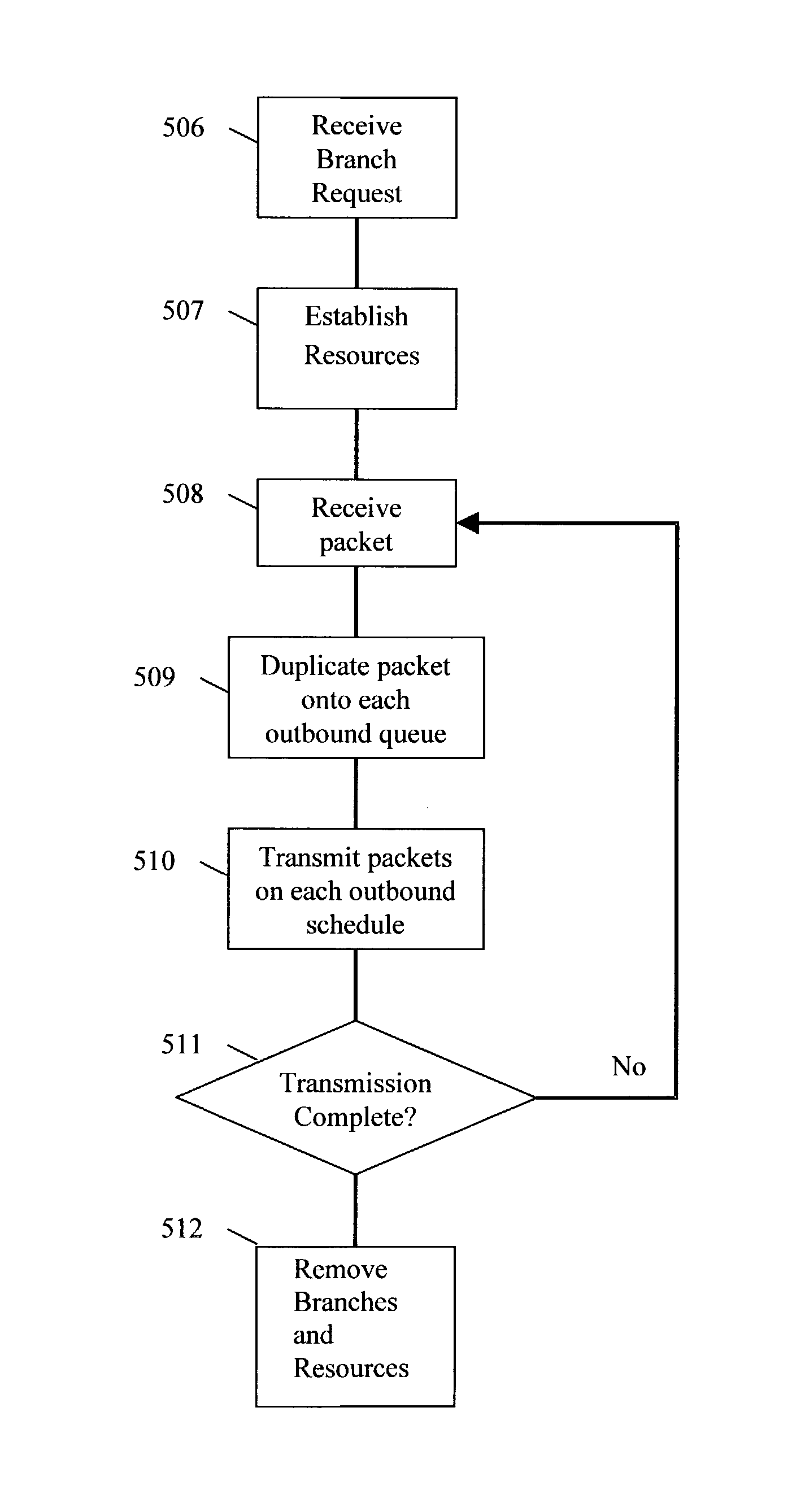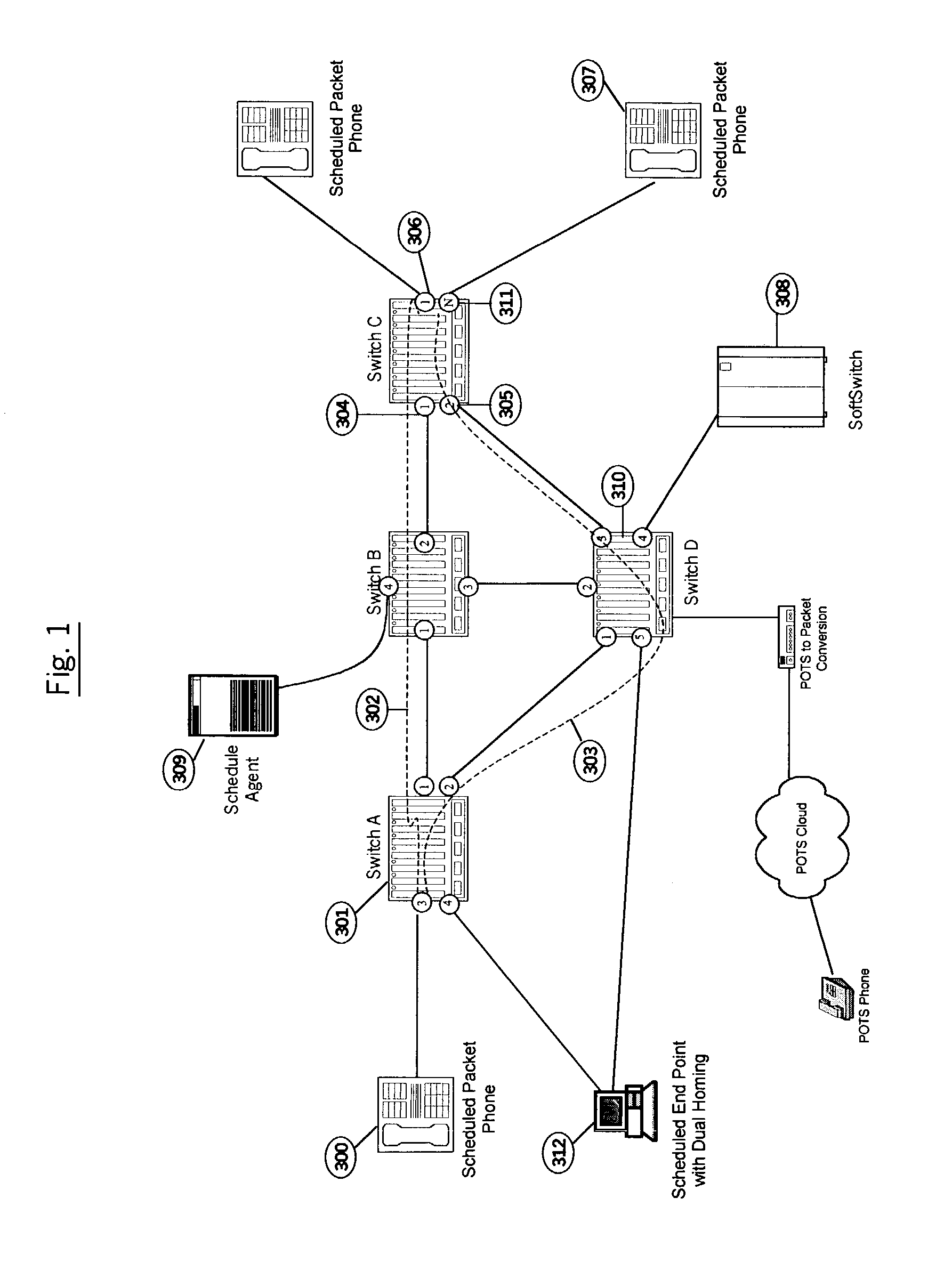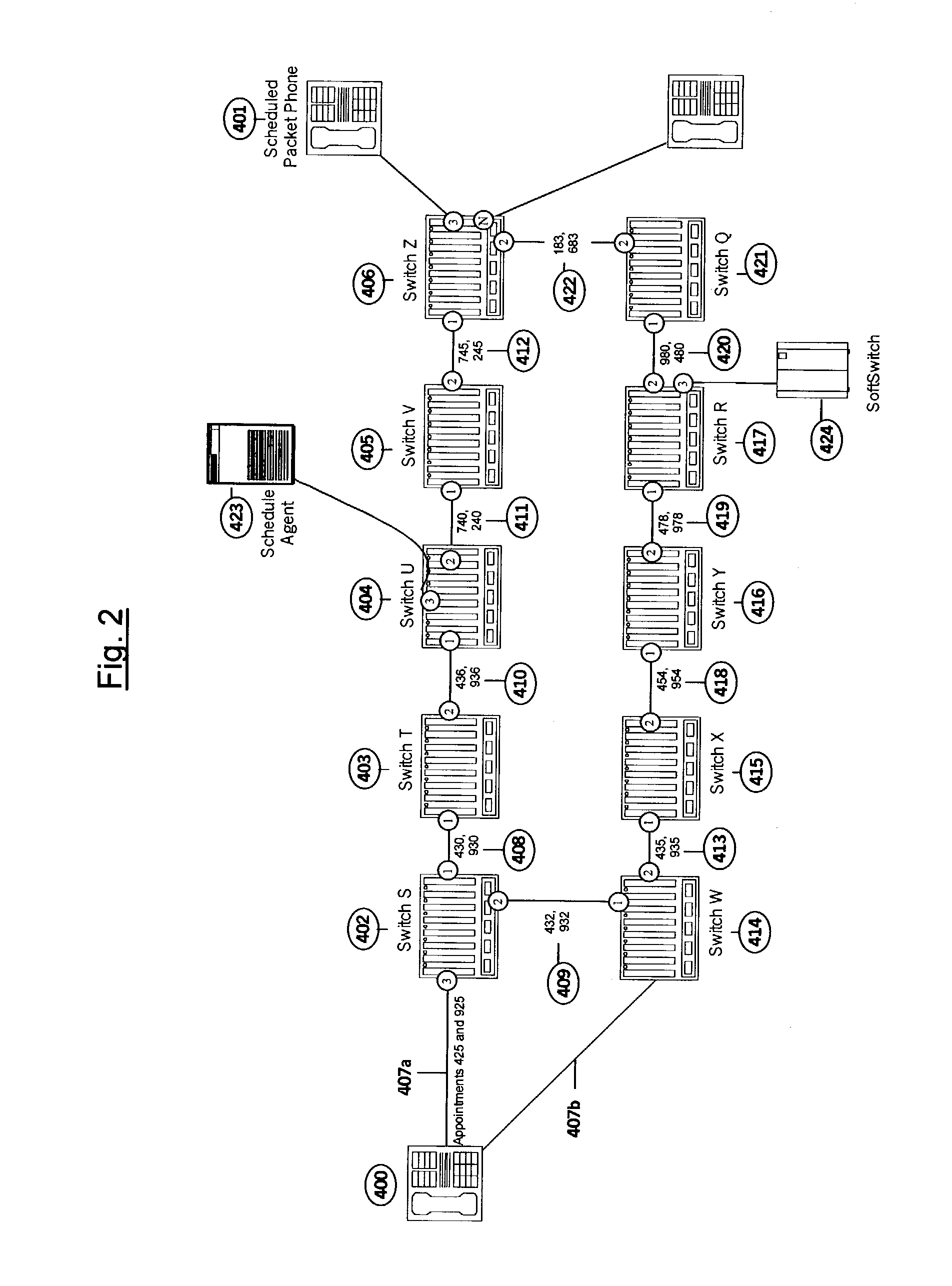Generation of redundant scheduled network paths using a branch and merge technique
a network path and branch and merge technology, applied in data switching networks, frequency-division multiplexes, instruments, etc., can solve problems such as failure tolerance cannot be achieved, redundancy alone cannot provide fault tolerance, and system designers and operators are, however, constrained, so as to increase the reliability of network paths, reduce performance, and dissipate
- Summary
- Abstract
- Description
- Claims
- Application Information
AI Technical Summary
Benefits of technology
Problems solved by technology
Method used
Image
Examples
Embodiment Construction
[0061]As shown in FIG. 1, illustrating an embodiment of the present invention, end devices 300, 307 are connected to a packet network comprised of one or more packet switches A, B, C, D, known as scheduled switch / routers (SSRs). Each SSR comprises a functional implementation equivalent to that of a NETWORK SWITCH WITH PACKET SCHEDULING, as more fully described in the co-pending '744 application incorporated herein by reference. The packet network also includes a real-time schedule server 309, also called a Schedule Agent, which is configured to receive network connection requests from the end devices, establish a network itinerary for each required path through the network, and communicate scheduling information to the end devices and respective switches along each path. Other features of the Schedule Agent are described more fully in the co-pending '744 application incorporated by reference herein, in which the Schedule Agent is referred to as a “schedule server”, and the functiona...
PUM
 Login to View More
Login to View More Abstract
Description
Claims
Application Information
 Login to View More
Login to View More - R&D
- Intellectual Property
- Life Sciences
- Materials
- Tech Scout
- Unparalleled Data Quality
- Higher Quality Content
- 60% Fewer Hallucinations
Browse by: Latest US Patents, China's latest patents, Technical Efficacy Thesaurus, Application Domain, Technology Topic, Popular Technical Reports.
© 2025 PatSnap. All rights reserved.Legal|Privacy policy|Modern Slavery Act Transparency Statement|Sitemap|About US| Contact US: help@patsnap.com



